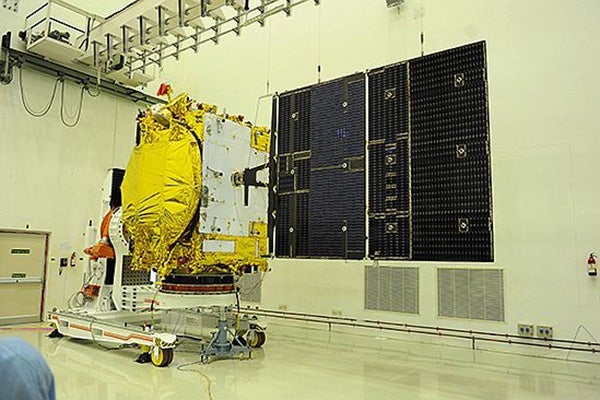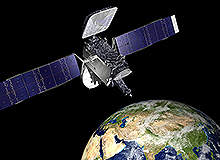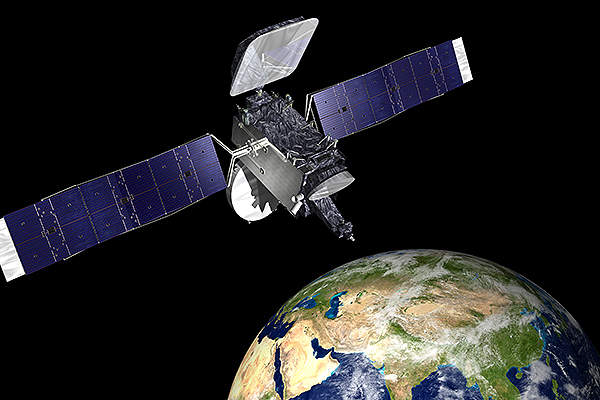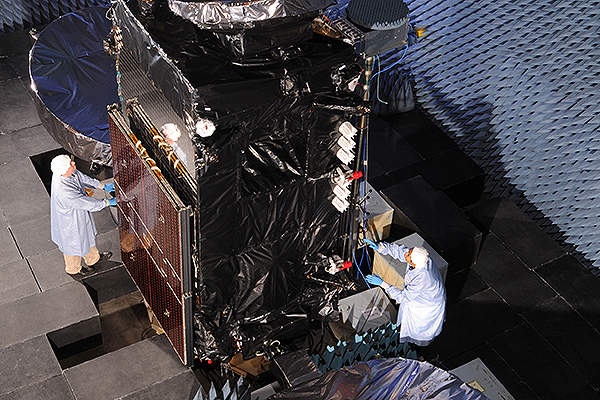
Thaicom 6 is a commercial telecommunications satellite launched into the Geostationary Transfer Orbit (GTO) in January 2014 from the Cape Canaveral Air Force Station in Florida. The satellite was manufactured by Orbital Sciences Corporation and launched by Space Exploration Technologies (SpaceX) for the Thailand-based satellite communications provider Thaicom, which owns and operates the satellite.
Thaicom 6 is co-located with Thaicom 5 satellite at 78.50 east longitude orbital location, and will provide video broadcasting services to Thailand, Laos, Cambodia, Myanmar and Madagascar.
Thaicom 6 satellite design and development
The design, manufacturing and testing contract for the Thaicom 6 satellite was awarded to Orbital Sciences Corporation in June 2011. The manufacturing and testing was done at Orbital’s Dulles satellite manufacturing facility in Virginia.
Thaicom 6 is a three-axis stabilised satellite with a launch mass of 3,325kg. It is a hybrid Ku- and C-band spacecraft consuming 3.5kW of payload power. It features a solar array consisting of three panels of Ultra Triple-Junction (UTJ) gallium arsenide solar cells, and is also equipped with Li-Ion batteries.
The mission life of the satellite is about 15 years. The total investment on the satellite development is estimated at $160m, which includes spacecraft, launch services and insurance.
Thaicom 6 satellite bus details
Thaicom 6 used the GEOStar-2 satellite bus platform developed by Orbital. The satellite bus is equipped to carry out satellite missions requiring up to 7.5kW of payload power. It can accommodate all commercial communication payloads and is dedicated to carry out single launch services, where launch cost and launch-sharing opportunities are favourable.
Launch vehicle for the communication satellite
The satellite was launched atop of the upgraded Falcon 9 rocket known as the Falcon 9 v1.1 manufactured by SpaceX. The 68m-tall rocket was fitted with upgraded Merlin 1D engines and larger propellant tanks.
The two-stage rocket was transported to SpaceX’s development facility located at McGregor, Texas, for testing. Both the stages were then trucked individually to Space Launch Complex 40 located on the Cape Canaveral Air Force Station in Cape Canaveral, Florida, and were integrated and encapsulated within the fairing.
Falcon 9 and its payload were brought to the launch pad and raised vertically one day prior to the launch date. The fuelling process involving liquid oxygen and RP-1 kerosene propellant began less than one hour before the launch.
The satellite was launched into the space on 6th January 2014 with the first stage ignition of nine Merlin engines generating 1.3million pounds of thrust. A single Merlin vacuum engine was ignited in the second stage, after 184 seconds of the flight.
The engine was burnt for five minutes and 35 seconds to inject the satellite into the parking orbit. The second stage engine was relit 18 minutes after the injection to take the satellite into its final geostationary transfer orbit.
Communication capabilities of the Thaicom 6
The satellite will mainly provide high-definition and digital television services for Thailand. It is fitted with eight Ku-band and 18 C-band transponders. The Ku-band transponders will provide services to Southeast Asia, while the C-band transponders will provide services through the satellite’s regional beam to Southeast Asia and Africa, including Madagascar.
Ground control station
GMV was awarded with a contract to provide the satellite control centre for the Thaicom 6 satellite in April 2012. The scope of the contract included providing satellite telemetry and telecommand and flight dynamics systems, as well as the ground equipment monitoring and control systems.







